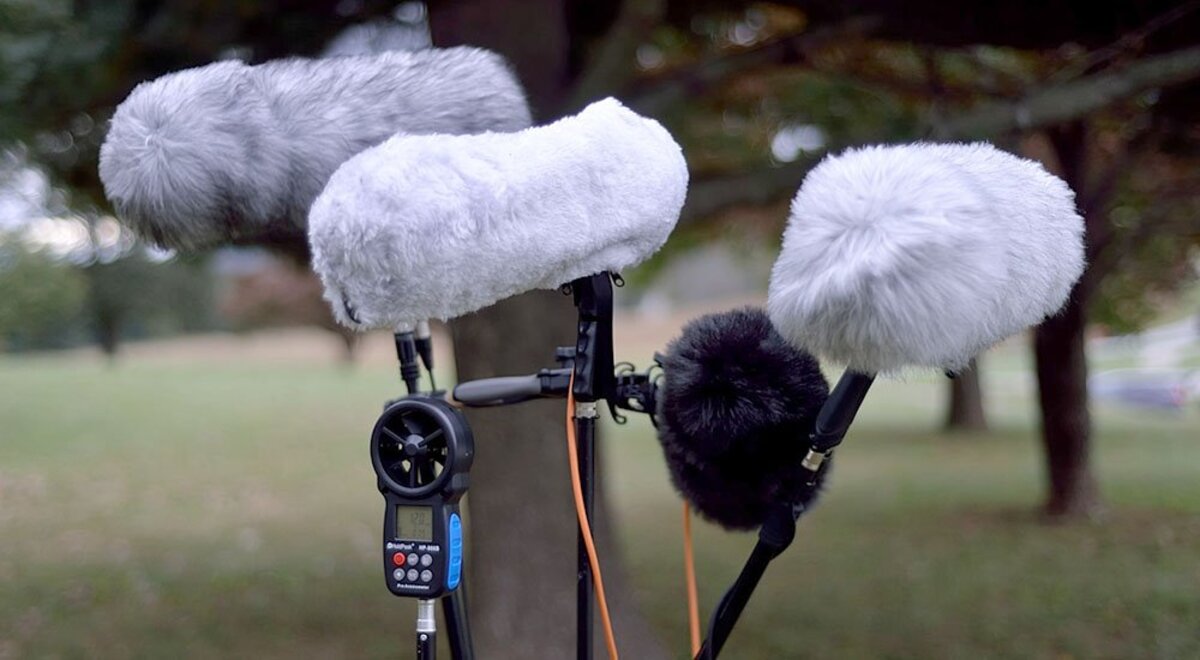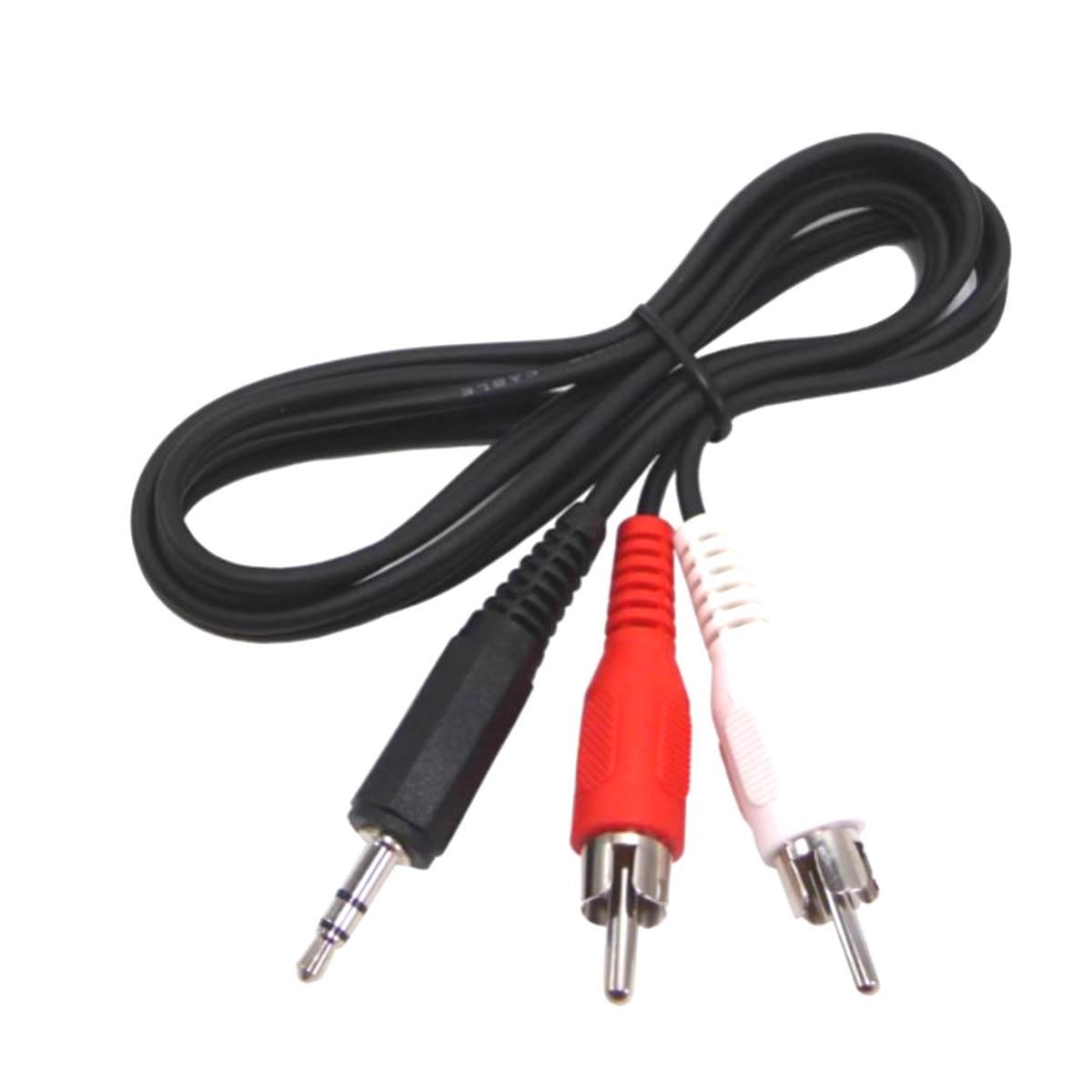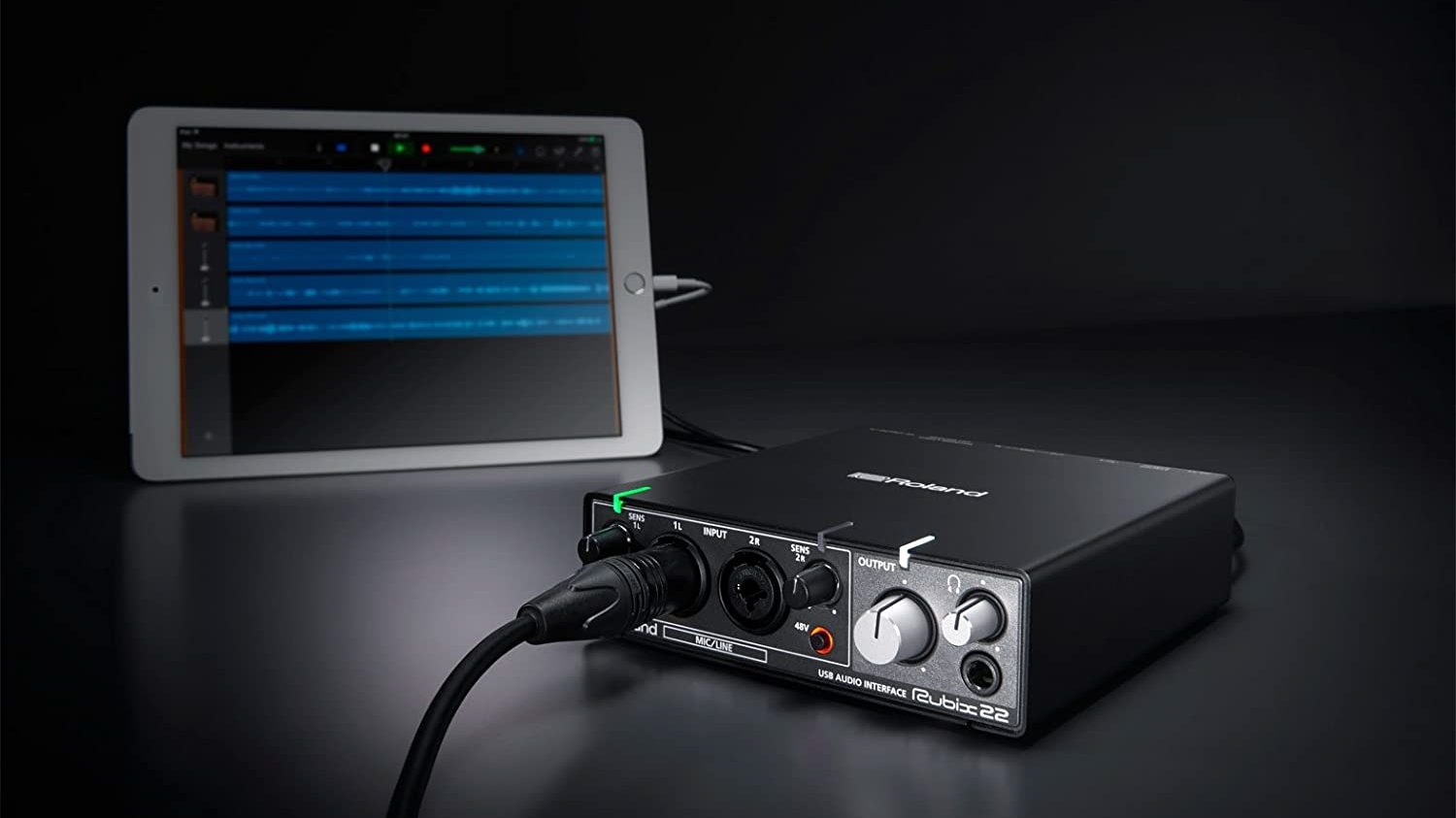Home>Production & Technology>Stereo>What Does Spatialize Stereo Do


Stereo
What Does Spatialize Stereo Do
Modified: January 22, 2024
Unlock a whole new world of audio with Spatialize Stereo. Immerse yourself in high-quality sound and experience stereo like never before.
(Many of the links in this article redirect to a specific reviewed product. Your purchase of these products through affiliate links helps to generate commission for AudioLover.com, at no extra cost. Learn more)
Table of Contents
Introduction
Welcome to the world of stereo sound! Stereo has revolutionized the way we experience audio by providing a three-dimensional soundstage that immerses us in our favorite music, movies, and games. But what if I told you there’s a way to take your stereo experience to the next level? That’s where spatialize stereo comes in.
Spatialize stereo is an advanced audio technology that enhances the spatial perception of sound, creating a more immersive and realistic listening experience. It takes traditional stereo sound and adds depth, width, and height to the audio, making it feel like the sound is coming from different directions and distances in the virtual space.
With spatialize stereo, you can feel like you’re in the middle of a live concert, with the music surrounding you from all directions. You can also hear the subtle nuances of a movie soundtrack as if you were sitting in the middle of the action. By adding spatial dimensions to stereo sound, this technology elevates the way we perceive and enjoy audio.
In this article, we’ll explore the concept of spatialize stereo in detail, delving into how it works, its benefits, applications, and limitations. Whether you’re a music enthusiast, a gamer, or simply someone who appreciates high-quality audio, understanding spatialize stereo will open up a whole new world of audio experiences for you.
Understanding Spatialize Stereo
Spatialize stereo is a technology that aims to recreate a natural and immersive sound environment by enhancing the spatial perception of traditional stereo sound. It is designed to simulate the way sound travels in the real world, replicating the way we perceive audio in a three-dimensional space.
In a traditional stereo setup, sound is delivered through two speakers placed in front of the listener, creating a left-right audio separation. While this provides a sense of directionality, it lacks the depth and spatial realism that we experience in real-life environments.
Spatialize stereo takes the stereo sound and processes it using advanced algorithms and signal processing techniques. These algorithms analyze the audio content, extract spatial cues, and apply modifications to create a spatial sound stage. The modified audio is then played back through a multi-speaker system or headphones to deliver an immersive and realistic audio experience.
One of the key aspects of spatialize stereo is the ability to create the illusion of sound coming from different directions and distances. By adjusting the volume, timing, and frequency response of the audio signals, spatialize stereo can make the sound appear like it is coming from specific points in space, rather than just from the left or right speakers.
It’s important to note that spatialize stereo doesn’t require specialized hardware in order to be enjoyed. While a multi-speaker setup can enhance the spatial effect, spatialize stereo can also be experienced through regular stereo speakers or headphones. The technology is implemented through software or audio processing algorithms that can be applied to any stereo sound source.
The concept of spatialize stereo is rooted in the field of psychoacoustics, which explores how the human auditory system perceives sound. By leveraging our understanding of how our ears interpret sound cues, spatialize stereo can create a convincing illusion of a three-dimensional audio environment.
Next, let’s take a closer look at how spatialize stereo works and the techniques it employs to enhance the spatial perception of sound.
How Spatialize Stereo Works
Spatialize stereo works by leveraging various techniques to enhance the spatial perception of sound, allowing us to experience audio in a more immersive and realistic way. Let’s explore some of the key components and techniques involved in the functioning of spatialize stereo:
- Audio Processing Algorithms: Spatialize stereo relies on sophisticated audio processing algorithms to analyze the stereo sound and extract relevant spatial cues. These algorithms take into account factors such as interaural time differences (ITD), interaural level differences (ILD), and spectral cues to determine the direction and distance of sound sources.
- HRTF (Head-Related Transfer Function): The HRTF is a crucial component of spatialize stereo. It represents the way sound is filtered by our head, ears, and body as it reaches our eardrums. By applying personalized HRTFs that match an individual listener’s anatomy, spatialize stereo can create a more accurate and personalized spatial sound experience.
- Virtual Sound Placement: Spatialize stereo uses virtual sound placement techniques to position sound sources in a three-dimensional space. By manipulating the panning, level, and delay of the audio signals, spatialize stereo can make it seem like the sound is coming from different directions, distances, and elevations.
- Room Simulation: To further enhance the spatial perception of sound, spatialize stereo may incorporate room simulation algorithms. These algorithms simulate the acoustic characteristics of different environments, such as concert halls or living rooms, adding reverberation and reflections to the audio. This creates a more immersive and realistic listening experience.
- Multichannel Speaker Systems: While spatialize stereo can be experienced through regular stereo speakers or headphones, it truly shines when used with multichannel speaker systems. These systems consist of multiple speakers placed strategically around the listener, providing a more accurate and immersive spatial sound experience.
By combining these techniques and components, spatialize stereo creates a virtual soundstage that goes beyond the limitations of traditional stereo sound. It adds depth, width, and height to the audio, making it feel like the sound is coming from different directions and distances.
Now that we’ve explored how spatialize stereo works, let’s delve into the benefits of using this advanced audio technology.
Benefits of Using Spatialize Stereo
The use of spatialize stereo technology provides several benefits that enhance the audio listening experience and offer a more immersive and realistic soundstage. Let’s explore some of the key advantages of using spatialize stereo:
- Enhanced Immersion: Spatialize stereo creates a more immersive audio experience by adding depth, width, and height to the sound. This allows you to feel like you’re part of the audio environment, whether it’s a concert hall, a movie scene, or a virtual gaming world.
- Accurate Sound Localization: Spatialize stereo improves sound localization by simulating the way sound travels in real-life environments. It creates a sense of directionality, making it easier to identify the position of individual sound sources within the audio panorama.
- Realistic Surround Sound: With spatialize stereo, you can enjoy a surround sound experience without the need for complex speaker setups. The technology creates a virtual surround sound field, making it feel like the audio is coming from all around you, even with just a pair of headphones or stereo speakers.
- Immersive Gaming Experience: For gamers, spatialize stereo can greatly enhance the gaming experience by providing realistic and accurate audio cues. It allows you to hear the position of approaching enemies, the direction of gunfire, or the subtle ambient sounds that bring the game world to life.
- Audio Detail and Nuances: Spatialize stereo brings out the finer details and nuances in the audio, allowing you to appreciate the subtleties of the music, movie soundtracks, or sound effects. It creates a more dynamic and immersive listening experience by preserving the spatial and tonal characteristics of the original recording.
- Personalized Listening Experience: Many spatialize stereo systems offer customization options, allowing you to personalize the audio experience. By adjusting parameters such as the virtual speaker positions or the HRTF, you can fine-tune the sound to match your individual preferences and anatomy.
Overall, spatialize stereo technology enhances the way we perceive and enjoy audio, creating a more immersive, realistic, and personalized listening experience. Whether it’s for music, movies, gaming, or virtual reality, spatialize stereo takes stereo sound to new heights.
Next, let’s explore some of the practical applications of spatialize stereo technology.
Applications of Spatialize Stereo
Spatialize stereo technology has a wide range of applications across various industries and entertainment mediums. Let’s explore some of the key areas where spatialize stereo is being utilized:
- Music Production and Mixing: Spatialize stereo is used in music production and mixing to create a three-dimensional soundstage. It allows producers and engineers to position instruments and vocals in the virtual space, enhancing the overall depth and immersion of the music.
- Movie Soundtracks and Surround Sound: Spatialize stereo is employed in the production of movie soundtracks to create a realistic and immersive audio experience. It adds spatial dimensions to the sound, making viewers feel like they are part of the movie scene. Additionally, spatialize stereo is used in home theater systems and cinemas to deliver a surround sound experience.
- Virtual Reality (VR) and Augmented Reality (AR): Spatialize stereo is crucial for creating a believable and immersive audio environment in virtual reality and augmented reality experiences. It enhances the sense of presence and realism by accurately positioning and tracking sound sources within the virtual space.
- Gaming: Spatialize stereo is widely used in gaming to provide an immersive and interactive audio experience. It allows gamers to hear sounds from different directions, providing vital audio cues for gameplay, such as the position of enemies or the direction of incoming threats.
- Podcasts and Audio Content: Spatialize stereo can be utilized in podcasts and audio content to create a more engaging and immersive listening experience. It adds an extra layer of depth and realism to the audio, making the listener feel more connected to the content.
- Virtual Meetings and Conferences: With the rise of remote work and virtual collaboration, spatialize stereo can enhance virtual meetings and conferences by creating a more natural and immersive audio environment. It improves the clarity and spatial positioning of voices, making it feel like participants are in the same room.
As spatialize stereo technology continues to evolve, we can expect to see its integration into a broader range of applications, further enhancing our audio experiences in various domains.
However, it’s important to recognize that there are also limitations to spatialize stereo technology, which we’ll explore in the next section.
Limitations of Spatialize Stereo
While spatialize stereo technology offers numerous benefits and enhances the audio experience, it also comes with a few limitations to consider. Let’s explore some of the key limitations of spatialize stereo:
- Headphones vs. Speaker Setup: Spatialize stereo performs best when experienced through a multi-speaker setup, as it can accurately recreate a three-dimensional soundstage. While it can still provide an enhanced experience through headphones, the spatial effect may not be as pronounced or accurate.
- Subjectivity of Perception: Spatialize stereo relies on individual perception and the listener’s ability to interpret spatial cues. Different people may perceive and interpret spatialized audio differently, which can impact the effectiveness of the technology for certain individuals.
- Audio Source Limitations: The effectiveness of spatialize stereo is influenced by the quality and characteristics of the original audio source. If the source material does not have sufficient spatial information, the enhancement provided by spatialize stereo may be limited or less pronounced.
- Dependence on Algorithm and Implementation: The quality and effectiveness of spatialize stereo can vary depending on the algorithm and implementation used. Different software or hardware solutions may produce different results, and some implementations may be more accurate and realistic than others.
- Room Acoustics: The acoustic characteristics of the listening environment can impact the performance of spatialize stereo. Room reflections and resonances can influence the perception of spatial audio, and poorly treated or reflective rooms may hinder the immersive experience.
- Compatibility and Device Limitations: Not all audio devices and platforms support spatialize stereo technology. Compatibility issues may arise when trying to use spatialize stereo with certain systems or software, limiting its availability and accessibility.
It’s important to consider these limitations when exploring and implementing spatialize stereo technology. Understanding the constraints and optimizing the setup can help mitigate these limitations and enhance the overall effectiveness of the spatial audio experience.
Now, let’s conclude our exploration of spatialize stereo technology.
Conclusion
Spatialize stereo technology is a game-changer in the world of audio, taking traditional stereo sound to new heights by adding depth, width, and height to the audio experience. By enhancing the spatial perception of sound, spatialize stereo creates a more immersive and realistic soundstage, captivating listeners and transforming their audio experiences.
Throughout this article, we’ve explored the concept of spatialize stereo, how it works, its benefits, applications, and limitations. The technology utilizes advanced algorithms, personalized HRTFs, virtual sound placement, and room simulation techniques to create a convincing illusion of a three-dimensional sound environment.
The benefits of using spatialize stereo are numerous. It enhances immersion, improves sound localization, delivers realistic surround sound, and brings out the finest audio details and nuances. From music production and movie soundtracks to gaming and virtual reality, spatialize stereo finds its applications in a variety of industries and entertainment mediums.
However, it’s important to understand and consider the limitations of spatialize stereo. Factors such as the type of audio source, individual perception, and the acoustic characteristics of the listening environment can impact the effectiveness of the technology.
As spatialize stereo technology continues to evolve, we can expect further advancements and enhancements to address these limitations and improve the overall audio experience. With the increasing demand for immersive audio in areas such as virtual reality and gaming, spatialize stereo holds immense potential for shaping the future of audio entertainment.
So, whether you’re a music lover seeking a more captivating listening experience, a gamer looking for a competitive edge, or a content creator aiming to provide a more immersive audio environment, spatialize stereo is a technology that you should explore and embrace.
Step into the world of spatialize stereo and let it transport you to a new dimension of audio immersion.











